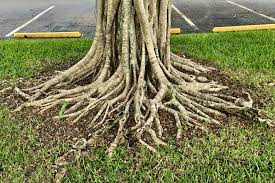The Fourth Technological Revolution will be based on the digitalization and networking of common objects made intelligent, i.e. the Internet of Things.
It is about to totally change the way we work, the world we live in, our relationships and our organizations, reflecting also on our society, on leadership and on how to be a leader.
For these reasons, business organizations, but also social, “profit” and “non-profit”, political, and perhaps even sports organizations will have to adapt and transform their leadership and management style as well.
Leadership 4.0 indicates the new leadership model necessary to carry out this technological and, inevitably social transaction to achieve OKRS.
We will need new styles of leaders or at least a transformation of what we have seen so far: we call it Leader 4.0.
This can do so if it manages to glimpse the digital future and prepare its team to face it.

The main capabilities of Leader 4.0
Leader 4.0, which we could also call Digital Leader, will have to set its leadership by leveraging 5 essential skills …
- Create a digital vision of the organization, to avoid being obsolete for the new technological course;
- Convert vision into action, involving all stakeholders;
- Create a collective or distributed leadership, where each follower of someone is leader of others, in a distributed intelligence network;
- Redesign the required unitary effort to achieve maximum efficiency of performance with minimum effort or cost;
- Govern the transformation, to ensure the social and ethical sustainability of the organizational transformation.
The Digital Leader must be able to interpret the digital transformation as an organizational transformation of the business model supported by technology, not making the mistake of transforming the company only as if it were a technological project for its own sake.
In short, the new technological revolution of OKR Software must be the means, but not the end, of transforming the organization.
Starting from these four capabilities of Leader 4.0 as necessary pillars, it will certainly be necessary to define some new basic features that allow the evolution of leadership in the Fourth Industrial Revolution.
These characteristics must be able to act by transforming the leader himself, his team of collaborators, the organization and the society in which he moves.
The main features of Leader 4.0
There are at least four essential traits that Leader 4.0 must possess or develop, which we could define as the main features of this new 4.0 Leadership.
Horizontal and vertical focus
In Organization 4.0, the new leader will have to follow a personal development approach, both horizontal and vertical (Transforming the self).
The horizontal development is related to all those technical skills oriented to the tasks to be performed, which can easily be taught and transferred from person to person, on which the organizations have had a lot of time to work on and develop it.
Vertical development, on the other hand, refers to all those skills as leaders or managers, oriented to people to be guided or managed, such as logical-decision-making skills, management of complex relationships, problem solving and innovation, the ability to perceive future trends, with related risks and opportunities.
Unfortunately, the vertical development organizations have not spent much time, also because it is difficult to transfer skills and, very often, rests heavily on the personal will of the leader to improve, grow and develop.
Responsibility for self and team development
The Leader 4.0 must have in its hands its own development and that of the team by demonstrating its exceptional abilities.
Often or at least until today, some leadership currents believe that others are responsible for our development in the sense that we must be given the opportunity to be in a leadership position.
Leader 4.0 takes responsibility for organizational development and tries to be a leader by demonstrating and practicing. He wins the trust of his team by assuming responsibility for the team’s performance and inculcates these responsibility habits even among team members.
Collective or distributed leadership
The Leader 4.0 will have to develop and equip its collaborators and other people in the organization as leaders, guiding them to a position where they learn, develop and operate by themselves.
Until now very often and mistakenly leadership has been considered an individual skill, while, in an interconnected world and with large amounts of information this concept is going towards a model of collective or distributed leadership.
Leadership will inevitably adapt to the distributed and shared decision-making processes of new technologies.
To understand, in cloud computing and edge computing the decision-making and information centers are distributed in a network of intelligence that share tasks, once assigned to a single central system, avoiding centralization, overload, loss of information and favoring the delegation of computational tasks.
Leader 4.0 authorizes team members to make decisions and make planning strategies. This helps not only to strengthen the trust of team members, but also trust within the team and towards the leader.
The Leader 4.0 also inculcates the habit among team members for cooperation, collaboration and information sharing; this helps share goals and put together collaborative efforts to achieve the OKR.
To do all this, Leader 4.0 must have a good understanding of human behavior and interpersonal ability, the so-called emotional intelligence composed of all those personal emotional skills and emotional social skills, which allow him to have an effective and persuasive communication, plus an ability to develop cooperative and effective relationships.
Innovation
Leader 4.0 will tend to experiment and develop innovative approaches, combining new approaches and diversified ideas, making them share and appreciate the stakeholders.
Industry 4.0 will be a complex future and there are still no ready-made models or programs that are efficient enough to develop a concept of collective leadership.
Leader 4.0 actively supports web-based technologies and tools to adapt the organizational change process, with better results than those resisting technological change.
This type of leader also has the ability to interpret the complex matrix of data and communication, to make decisions about the present, but predicting the future from interpretations of current trends.
The organizational transformation carried out through this innovative and creative drive will eventually have to be extended to the entire company, including its interaction with customers, suppliers and partners.
Conclusions
Starting from these four main features of Leader 4.0, we can also extract other essential features of the leader of the future.
The fundamental novelty is the personal responsibility of one’s own development and growth, which applied to the leader and his followers, will inevitably lead to a model of organizational leadership that we will call collective, where each member of the structure must be endowed with ample autonomy, responsibility and own leadership.
We only hope that the leadership will not replace the man with the robot leader!
What do you say?









+ There are no comments
Add yours